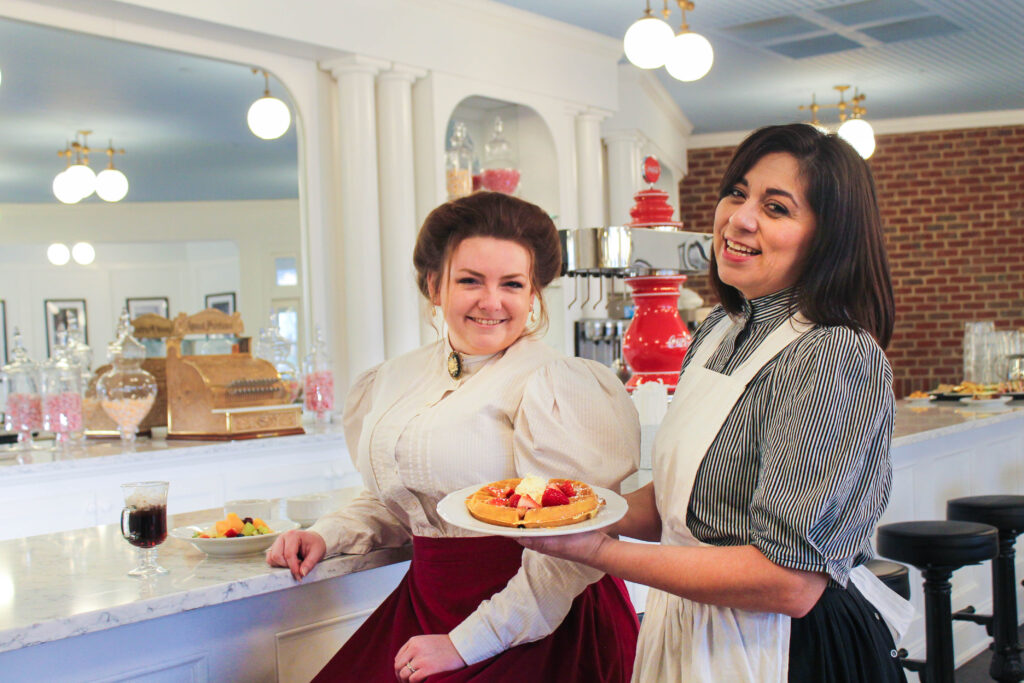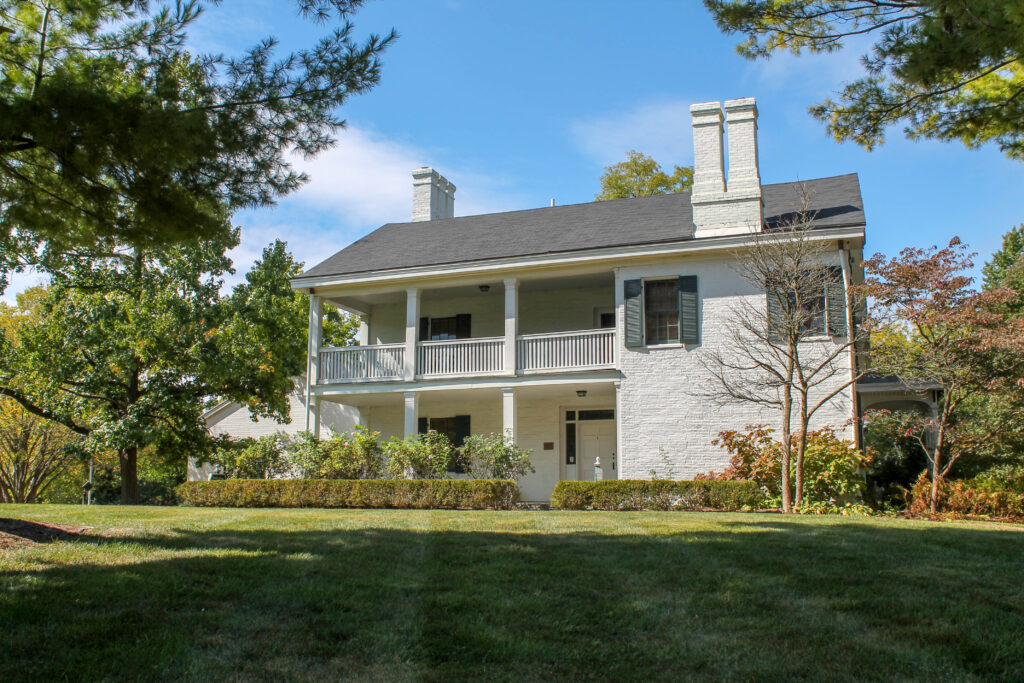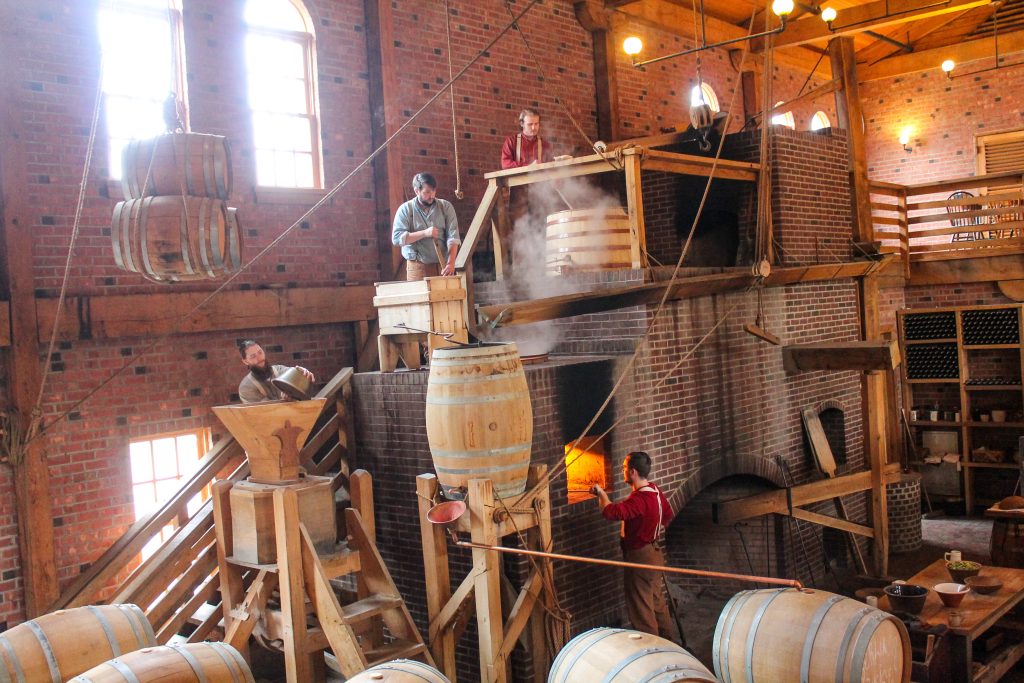Things to Do
Inside Carillon Historical Park

Early Settlement Area
Consisting of Newcom Tavern (Dayton’s oldest standing building, ca. 1796), the William Morris House (ca. 1815), the Hetzel Summer Kitchen (1817), Newcom House (ca. 1841), the Watervliet Shaker Building (ca. 1819), and Locust Grove School No. 12 (1896), Carillon Historical Park’s Early Settlement Area recalls the early days of Dayton—a city that would grow and evolve to eventually change the world.

Heritage Center of Dayton Manufacturing & Entrepreneurship
By the turn of the century, Dayton had more patents, per capita, than any U.S. city, and one-sixth of the nation’s corporate executives had spent a portion of their career at legendary Dayton company National Cash Register (NCR). Beginning in the mid-1800s, Dayton established itself as a center of manufacturing and entrepreneurship.

History on the Hill & Moraine Trails
The History on the Hill Interpretive Center tells the story of the land on which Carillon Historical Park sits—its geological history, its settlement by the prehistoric Hopewell people, and its use as a segment of the Miami and Erie Canal. Featuring a number of exhilarating tunnel slides, History on the Hill has become a popular spot for guests of all ages.

Culp’s Café
Carillon Historical Park presents a brand new Culp’s Café. This one of a kind eatery pays homage to the small soda fountains and lunch counters found throughout Dayton in the early nineteen hundreds. Culp’s Café offers delicious breakfast platters, sandwiches, soups, salads, chicken & waffles, and classic soda fountain favorites.

Wright Brothers National Museum
The John W. Berry, Sr. Wright Brothers National Museum has more Wright artifacts on display than any other place in the world, including the 1905 Wright Flyer III: the only airplane designated a National Historic Landmark, the first practical flying machine, and what the Wright brothers considered their most important aircraft.

Gem City Letterpress
Gem City Letterpress is the nation’s only fully operational 1930s letterpress job shop in a museum. With authentic 1930s printing equipment and furnishings, Gem City Letterpress harkens to a time when Dayton had 77 printing companies, ranging from one-person operations to McCall’s, which produced 4 million magazines daily, including Newsweek, U.S. News & World Report, Reader’s Digest, Redbook, and Popular Science.
The James F. Dicke Family Transportation Center
The James F. Dicke Family Transportation Center houses the 1835 B&O #1, John Quincy Adams (the oldest existing American-built locomotive), a breathtaking Barney & Smith parlor railcar, an authentic Conestoga wagon, and many other exceptional transportation-themed artifacts.

The Great 1913 Flood Exhibit
The Great 1913 Flood was Ohio’s worst natural disaster; waters reached 20 feet in low-lying areas and rushed up to 25 miles-per-hour. Gas lines broke, fires roared across town, and the Great Miami River swelled to more than a mile wide on either side. While over 1,400 horses died, the region only accounted for 361 human casualties, largely due to NCR’s massive relief efforts.
Off-Campus Sites

Mound Cold War Discovery Center
From 1948–2003, the scientific work of Mound Laboratory was so top secret that some remains classified to this day. Named for the neighboring Adena earthwork—one of the two largest conical mounds in eastern North America—this government facility revolutionized Cold War, Nuclear Age, and Space Race history.

Patterson Homestead
Constructed in three major components between 1816–1850, this legendary home raised three generations of Pattersons, including legendary industrialist John H. Patterson who founded his National Cash Register enterprise on the family’s land—roughly a half-mile northwest of Patterson Homestead.





